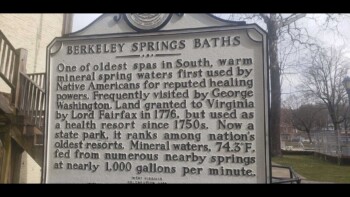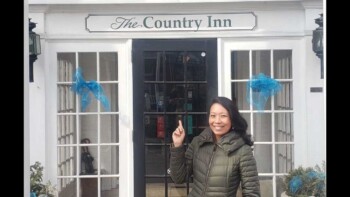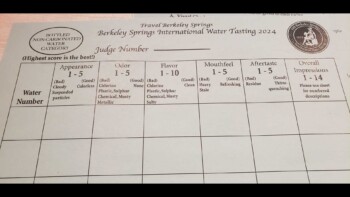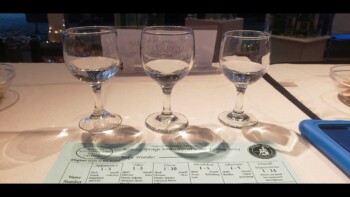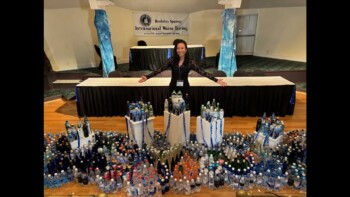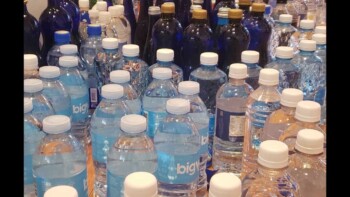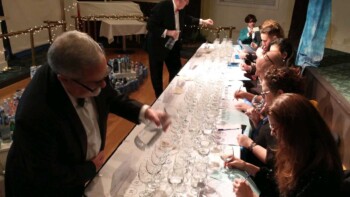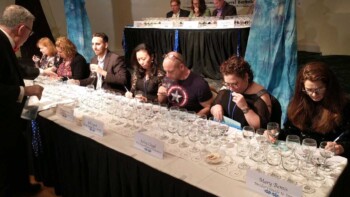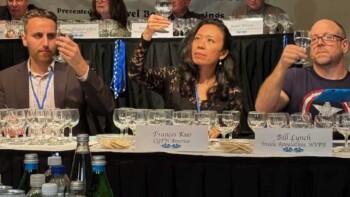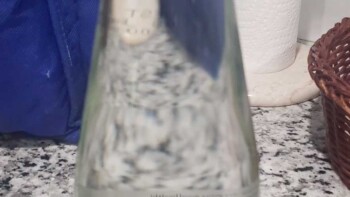When it comes to beverage choices, I’m partial to the sparkling water persuasion with a penchant for a Perrier or Pellegrino. Call me judgy. But now I actually qualify to be a judge, after I was recently designated a “Certified Water Taster” through an unexpected turn of events.

Me posing in front of the sign for the 34th annual Berkeley Springs International Water Tasting.
It all started when I was researching a story and somehow ended up on the website of the Berkeley Springs International Water Tasting Competition. I discovered that the competition is the largest, longest-running and most prestigious water tasting in the world. Now in its 34th year, it’s affectionately called the “Academy Awards of Water.” It’s drawn water entries from 59 countries and 47 states over its lifetime.
The competition appropriately takes place in Berkeley Springs, West Virginia, where water is the bread and butter of the town with a population hovering around 750. The historic town is renowned for its natural warm springs which flow at a constant temperature of 74.5 degrees Fahrenheit, or 23.6 degrees Celsius. U.S. President George Washington discovered the town’s natural springs when he was a teenager and was known to regularly wade in its waters. Washington’s stone bathtub is proudly displayed in the center of town — not exactly where he bathed, but symbolic of his many visits to Berkeley Springs for presidential pampering.
You might ask though – “Why judge drinking water?” Partly because it’s a big moneymaker. According to ResearchAndMarkets.com, the global bottled-water market is estimated to reach $484.7 billion by 2030, up nearly 7 percent from 2022. Sparkling water is a nearly $30 billion industry and rising, according to market research firm Grandview Research. Part of the drive comes from younger and health-conscious consumers, and companies are appealing to them with creative inventions and catchy names like “Liquid Death” and trētap – which is water sourced and sweetened by maple trees in Vermont. So, from a news standpoint, this competition seemed quite timely. From a personal standpoint, I found it charmingly quirky. I was hooked and immediately accepted an invitation as a judge.
I, along with 10 other judges (some experienced, some not), started with a training session with Arthur Von Wiesenberger, a Water Master based in Santa Barbara, California, who incidentally mentions to me that he has a water cellar in his home. His water mastery dates back to part of his childhood growing up in Rome, Italy, where the tap water was naturally carbonated and varieties of bottled mineral waters were abundant. That nascent sensitivity to water would help him later at Anheuser-Busch where he was hired to develop the company’s water division. He would later author several books, including “H2O: The Guide to Quality Bottled Water.” My journalist’s instincts screamed, “OK, he’s legit!”
Von Wiesenberger has an easy way about him; during his briefing with us judges, his training talks were informational and informal, with a tinge of the acknowledgement that some of us newbies were clueless and slightly skeptical of this water world into which we were plunging. Von Wiesenberger informed us about all the subtleties to which we needed to be sensitive, requiring our senses to go into full-throttle.
We learned about “appearance” – water should be clear and transparent — and he advised us to hold our water samples to the light in front of a white sheet to get a better view.
“Aroma” is another criterion; much like putting your nose to a glass of wine, water can also emit certain scents depending on its source, mineral content and the containers in which they lie. Water with sulphur smells like rotten eggs, iron in water has a metallic smell, and tap water can smell like the chlorine used to treat it.
In this competition, these were all worthy of point deductions. “Taste” can be experienced during the drinking and after; we’re told to take a sip, roll it around our mouth and let our taste buds pick up hints of sweetness, sourness, or bitterness — all no-nos. If the water leaves you wanting more, it’s a good sign.
“Texture” is like the “heft” of the water; is it slippery? Silky? Chewable? Like a wet Band-Aid when you suck water out of it when it falls into the shower (Von Wiesenberger’s words, not mine)? Those qualities were the easiest to detect in sparkling water which is partly judged on “bubble size,” or how aggressive the carbonation is.
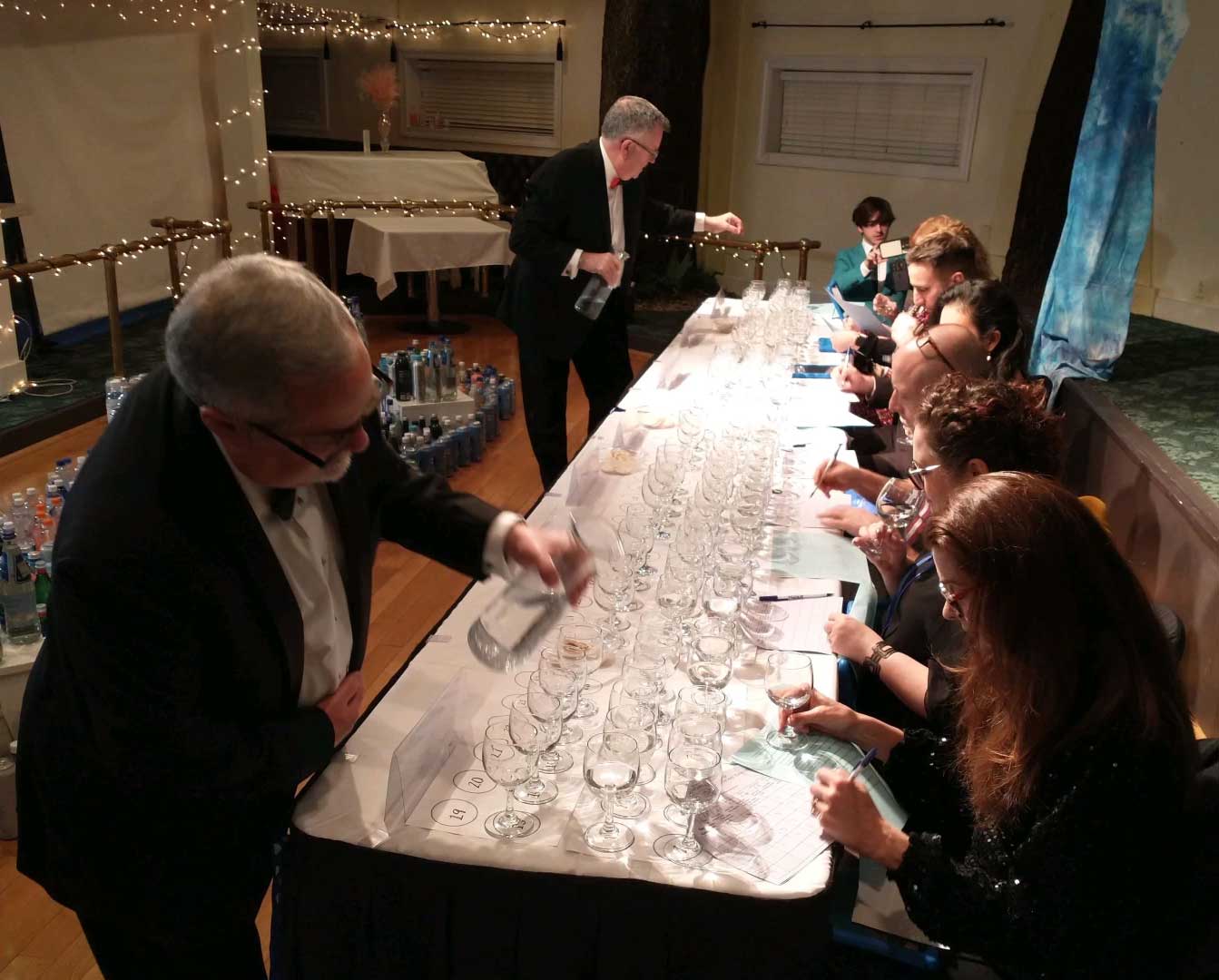
Water being poured into our glasses. Unlike the municipal, purified and non-carbonated categories, sparkling waters have to consumed and judged relatively quicker to better assess the carbonation. (Photo by Happy Rone)
Our Water Master/teacher also sprinkled us with some interesting factoids: Water entries are kept at room temperature as chilled water can mask its real taste; glass is the optimal container to store water (plastic can seep into the water and affect its taste and, dishearteningly, some of the water submissions are bottled in plastic); and Europeans tend to like mineralized water with an after-taste, while Americans tend to like it clean. Incidentally, Von Wiesenberger’s favorite water is Badoit, a naturally occurring sparkling water from a small town in France’s Loire Valley.
Von Wiesenberger giddily tells me the water “dances in your mouth.”
The seminar was informative but brief, and I didn’t feel much confidence in my qualifications. We started with a trial run, to get our mouths wet, so to speak, and sampled three waters. I found each to be quite distinctive – one clear and crisp, one bouncy and bubbly, the other, well, tap. I got cocky, assured that my discerning taste buds were fired up and up to task. A friendly reminder came from the event’s organizer, Jill Klein Rone, who told us that we had the most important job during the competition; an award here comes with major bragging rights and can provide a major boost for both established and fledgling companies.
Then, over the next several hours (with plenty of bathroom breaks in between), we judged four flights of about 20 water samples each, for a total of about 80 waters altogether. The first round consisted of municipal (tap) water and purified drinking water; the second round of sparkling and non-carbonated water. We judged each sample on an overall point scale of 1-14 based on the various criteria discussed earlier. We were encouraged to nibble on Carr’s Table Water Crackers to help clear our palate and stimulate our taste buds.
For the municipal water and sparkling water categories, I could detect aftertastes, aromas and textures, and my scores swung erratically. The purified drinking water and non-carbonated categories were significantly tougher; I found the majority were crisp and clean and quite similar. I wondered how much more training I needed to get to the point I could taste subtle differences.
The results were tabulated and it turns out, us judges were pretty consistent in our choices. Top honors went to Santa Ana, CA for Best Municipal Water; Eldorado Natural Spring Water in Colorado for Best Non-carbonated Water; New Zealand’s Otakiri Reserve for Best Sparking Water; and St. Kitts & Nevis’ Mountain Springs for Best Purified Drinking Water.
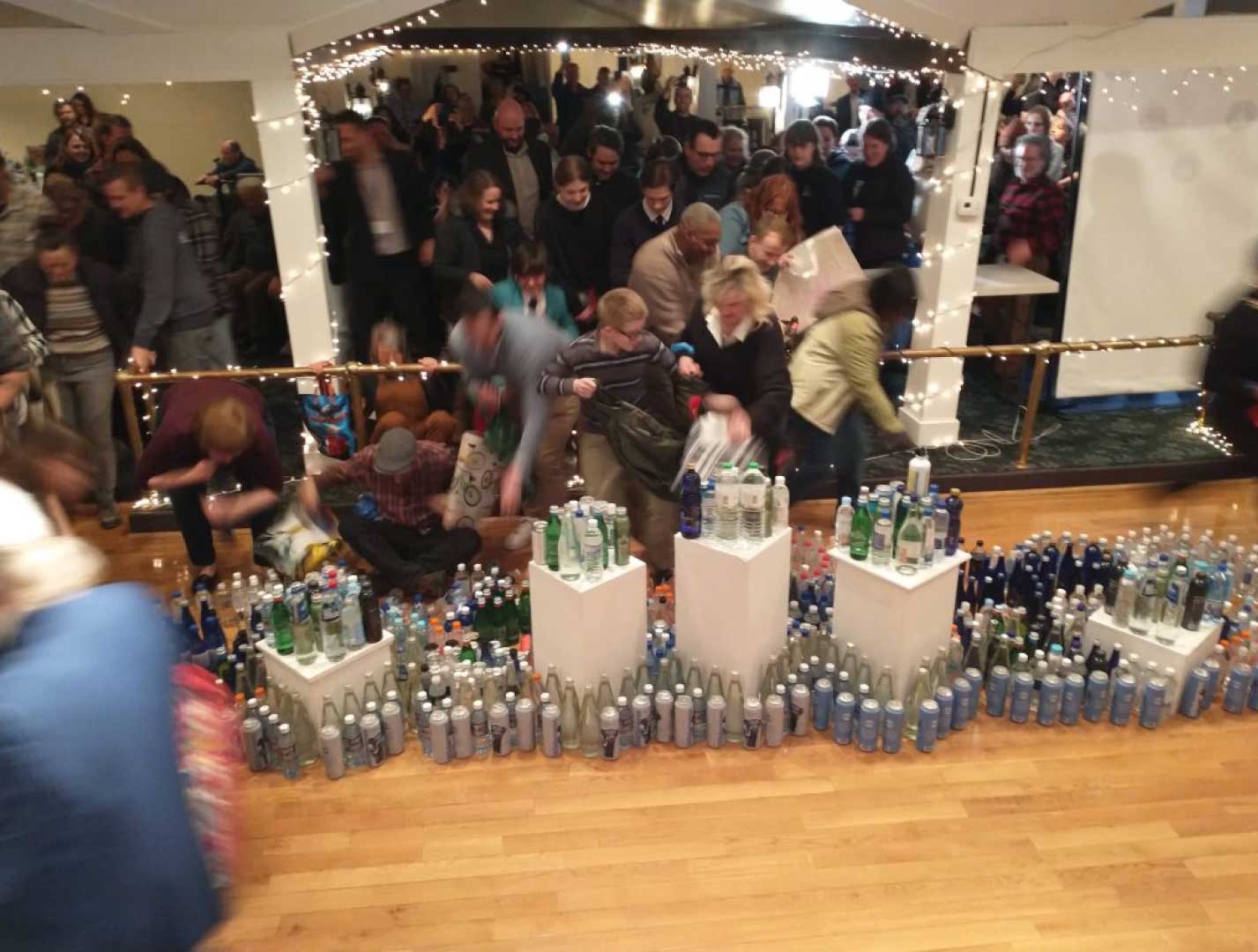
Members of the public “rush” to grab as many water bottle samples at the end of the competition. (Photo by Happy Rone)
The most eye-opening part was the “Water Rush” where the public had the opportunity to grab as many water bottles of the samples entered into the competition as they could. I sat next to a couple who made the five-hour drive from Brooklyn, NY, – Peter and Cynthia Lloyd – who are quite famous at the Water Tasting. They’ve been coming every year and thirstily scooped up dozens of water bottles with impressive deft. It’s not an easy feat given the dozens of people who rush like a Black Friday sale. A display that took hours to set up is gone in 10 minutes.
The entire experience left me with a few sample bottles and a bit water-logged, but grateful for the experience. A water master I will never be, but for one day, I got a taste of this unique water world and its culture. And, the credentials to characterize a water sample as “a wet Band-Aid.”
The next annual Berkeley Springs International Water Tasting will take place on February 22, 2025.
 CGTN America
CGTN America
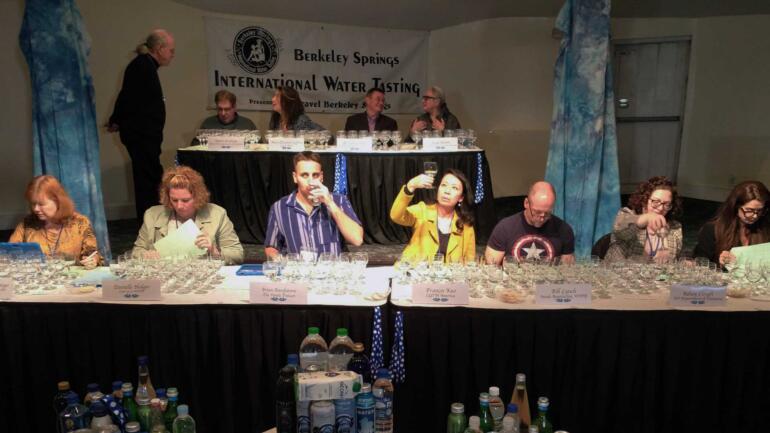 CGTN’s Frances Kuo holds up a glass during her experience of being a judge in a water tasting competition. (Photo by Happy Rone)
CGTN’s Frances Kuo holds up a glass during her experience of being a judge in a water tasting competition. (Photo by Happy Rone)
